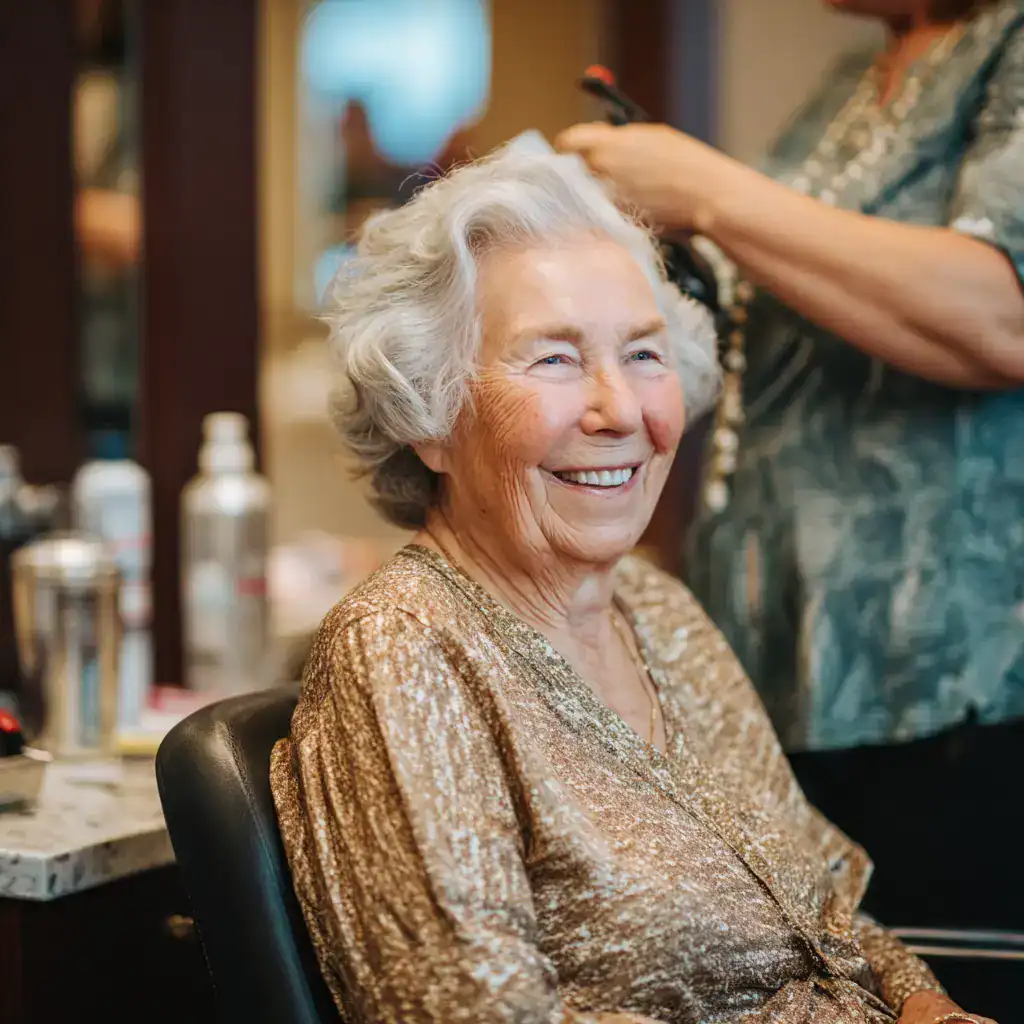7 Ways to Increase Revenues for Your RCFE Facility
Running a successful Residential Care Facility for the Elderly (RCFE) requires more than providing quality care to residents. There are more than 31,000 senior living communities nationwide with approximately 2.1 million residents. Therefore, maximizing revenue while maintaining exceptional service standards becomes critical to long-term sustainability.
At Assisted Living Education, our team has worked with hundreds of facility owners across California, helping them navigate the complex landscape of RCFE operations and is now recognized as the leading RCFE educational training program in California.
Through our extensive experience in facility consulting and administrator training, we’ve identified seven proven strategies that consistently drive revenue growth for RCFE operators.
1. Optimize Your Pricing Strategy and Rate Structure
Strategic pricing forms the foundation of revenue optimization for any RCFE facility. Many operators undervalue their services, leaving significant money on the table. Research shows that communities with proper sales and marketing alignment can achieve up to a 20% increase in overall revenue.
Start by conducting a comprehensive market analysis of competitor pricing in your area. Factor in your facility’s unique amenities, location advantages, and care quality differentiators when setting rates. Remember that potential residents and their families often prioritize value over the lowest price.
For facilities operating at or near capacity, gradual rate increases represent a direct path to revenue growth.
California regulations require RCFEs to provide at least 90 days prior written notice for rate increases, except for changes due to a resident’s care level adjustments. This advance notice requirement allows for proper planning and resident communication.
Implement tiered pricing structures that reflect different levels of care and service. Basic room and board should serve as your foundation rate, with additional services priced separately. This approach allows residents to customize their care packages while providing multiple revenue streams for your facility.
2. Maximize Occupancy Through Strategic Marketing
Occupancy directly drives profitability in the RCFE industry. Every empty bed represents lost revenue that compounds monthly. Developing an effective assisted living marketing plan becomes essential for maintaining high occupancy rates.
Modern seniors research options online before making decisions. Older adults’ online searches for senior living options have grown 15% while overall demand has increased approximately 3% yearly. Your digital presence must reflect the quality and unique features of your facility.
Focus on developing a strong online presence that showcases your facility’s atmosphere, amenities, and care philosophy. Professional photography, virtual tours, and resident testimonials create emotional connections with prospective residents and their families.
Building relationships with healthcare professionals, discharge planners, and community organizations generates consistent referral streams. Referrals can come from many different sources, and cultivating relationships with these resources while expressing gratitude when they send prospects creates a sustainable pipeline.
Track your marketing return on investment carefully. Each marketing dollar should generate more revenue than it costs. Calculate the lifetime value of each resident to determine appropriate marketing spending levels for your facility size and market.

Assisting seniors with things like making beauty salon appointments and coordinating trips will add complementary revenue.
3. Diversify Revenue Streams Beyond Basic Care
Successful RCFE facilities generate income from multiple sources rather than relying solely on room and board fees. Facilities can diversify revenue streams by offering specialized healthcare services, rehabilitation, or lifestyle amenities that appeal to a broader range of residents and command higher fees.
Consider adding services such as medication management, physical therapy coordination, transportation services, or specialized memory care programs. Each additional service creates new revenue opportunities while enhancing your value proposition to residents.
Ancillary services like beauty salon visits, housekeeping upgrades, pet care, or concierge services provide convenience to residents while generating additional income. These services often carry higher profit margins than basic care services.
Partner with local healthcare providers to offer on-site services such as podiatry, dental care, or wellness clinics. These partnerships can generate referral fees or rental income while providing valuable services to your residents.
Explore opportunities for community event hosting or educational workshops that generate facility rental income while showcasing your facility to potential residents and their families.
4. Implement Technology for Operational Efficiency
Technology investments can significantly impact your bottom line through improved operational efficiency and enhanced resident care. Management software and other technology implementations can streamline operations and reduce administrative costs.
Electronic health records and medication management systems reduce staff time spent on documentation while improving care coordination. These systems also help prevent costly medication errors and regulatory compliance issues.
Automated billing and accounting systems reduce administrative overhead while improving cash flow management. These systems can also track key performance indicators that help identify revenue optimization opportunities.
Communication platforms that connect residents with family members can serve as an additional revenue stream while improving resident satisfaction and family engagement.
Safety monitoring technology can reduce staff-to-resident ratios in certain situations while maintaining high safety standards, directly impacting operational costs and profitability.
5. Focus on Resident Retention and Satisfaction
Retaining existing residents costs significantly less than acquiring new ones. Facilities with fewer resident discharges maintain higher occupancy rates and increased ROI. High resident turnover not only reduces revenue but also increases marketing and administrative costs.
Create comprehensive wellness and activity programs that keep residents engaged and socially connected. Approximately half of senior living residents experience major symptoms of depression, making mental health and social engagement crucial for retention.
Regular resident satisfaction surveys help identify areas for improvement before problems lead to move-outs. Address concerns promptly and communicate improvements to demonstrate your commitment to resident wellbeing.
Invest in staff training and retention programs. Consistent, caring staff members build relationships with residents that increase satisfaction and reduce turnover. High staff turnover disrupts resident care and increases operational costs.
Develop family engagement programs that keep adult children involved and satisfied with their parent’s care. Family satisfaction often influences resident retention decisions.
6. Understand Your Market and Position Strategically
Before making significant investments in your facility, understand what to know before buying an RCFE and how market positioning affects revenue potential. Your facility’s unique selling proposition (USP) differentiates you from competitors and justifies premium pricing.
Analyze your local market demographics, competitor offerings, and unmet needs. Identify gaps in services or amenities that your facility could fill to attract residents willing to pay higher rates.
Consider the total cost structure when evaluating revenue opportunities. Understanding the cost to start an assisted living facility in California helps contextualize your pricing strategy and profit margins.
Position your facility to serve specific market segments that align with your capabilities and location. Specializing in memory care, luxury amenities, or specific cultural communities can command premium pricing while reducing direct competition.
Develop partnerships with healthcare systems, insurance companies, or community organizations that can provide steady resident referrals while potentially offering preferred provider arrangements.
7. Strategic Approaches to Increase Occupancy
Learning how to increase occupancy at your facility requires a multifaceted approach combining marketing, operational excellence, and strategic positioning.
Implement a robust lead tracking system that monitors inquiry sources, conversion rates, and factors influencing prospect decisions. This data helps optimize marketing spending and identify successful strategies for replication.
Create urgency through limited-time promotions or move-in incentives without devaluing your services. First month rent reductions, waived community fees, or complimentary services can motivate prospects to choose your facility over competitors.
Maintain a waiting list for your most desirable rooms and promote this exclusivity in marketing materials. Scarcity often increases perceived value and motivates quicker decision-making.
Develop move-in coordination services that simplify the transition process for new residents and their families. Stress-free move-in experiences lead to positive reviews and referrals that generate additional residents.
Monitor local market conditions and adjust strategies accordingly. Economic changes, new competitor openings, or demographic shifts may require strategy modifications to maintain occupancy levels.
***
Revenue optimization for RCFE facilities requires consistent attention to multiple operational areas simultaneously. Successful facility owners focus on occupancy maximization, strategic pricing, service diversification, and operational efficiency while maintaining the high care standards that attract and retain residents.
The strategies outlined above work synergistically to create sustainable revenue growth. Higher occupancy rates support rate increases, while improved services and amenities justify premium pricing. Technology investments reduce costs while improving care quality, and strong marketing generates the consistent resident flow necessary for sustained profitability.
Remember that revenue growth must align with your RCFE license requirements and regulatory compliance obligations. Always consult with qualified professionals when implementing significant operational changes or pricing strategies.
Success in the RCFE industry comes from balancing financial objectives with genuine care for residents. Facilities that excel at both create sustainable competitive advantages that drive long-term revenue growth while making meaningful differences in residents’ lives.
The key lies in consistent implementation of these strategies while monitoring results and adjusting approaches based on your specific market conditions and facility capabilities. Start with the areas where you can make the most immediate impact, then gradually implement additional strategies as you build momentum and resources.
At Assisted Living Education, our team has supported countless RCFE owners and administrators through licensing, training, and operational guidance. By applying these seven strategies, you can build a thriving facility that benefits both residents and your bottom line.




